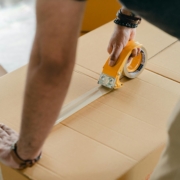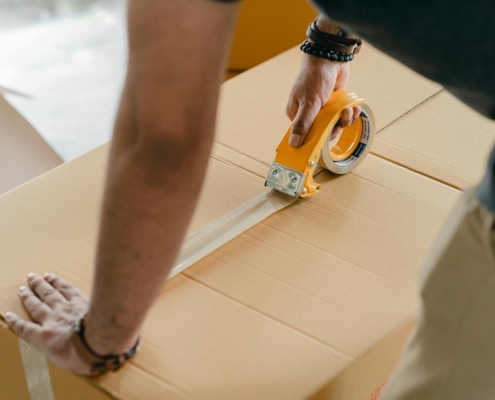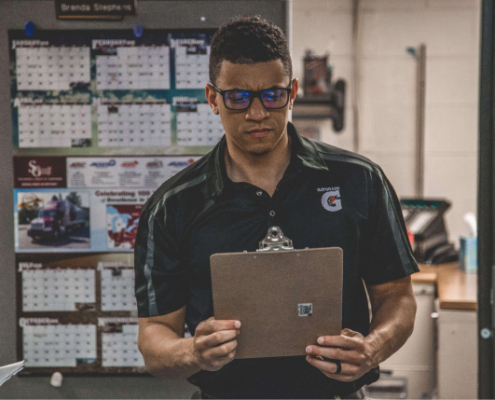As online shopping continues to evolve, many e-commerce brands are reaching a point where traditional direct-to-consumer (B2C) channels are no longer enough to sustain rapid growth. While B2C has been the default model for years—especially during the surge of the pandemic—competition is fierce, and customer acquisition costs are rising.
To stay ahead, more e-commerce businesses are exploring new revenue streams, especially in B2B (business-to-business) sales, and extending their reach across borders.
What Is B2B in E-Commerce?
In a B2B model, online brands sell their products to other businesses instead of individual consumers. These buyers could be retail chains, marketplaces, or other companies that resell the product to end customers. Sometimes, this approach is referred to as B2B2C—where products pass through another layer before reaching consumers.
This model enables brands to diversify their distribution channels. For example, a company might sell directly through its own online store or physical location, while also forming partnerships with platforms like Amazon, Zalando, or eBay, and retailers like Lidl, Sephora, or Hebe. These B2B partners can place bulk orders and then distribute the products under their own sales channels—locally or internationally.
Why B2B Sales Are Worth Exploring
Reach New Markets Faster
B2B partnerships open doors to entirely new customer bases. By working with established retailers and marketplaces in different countries, brands can accelerate their expansion without having to build an audience from scratch in each market.
Rather than targeting thousands of individual buyers, brands can scale faster by partnering with a few large players who can move volume.
Stronger, More Predictable Revenue
Brands active in B2B often report rapid year-over-year growth—sometimes doubling revenue compared to their D2C sales. Large wholesale orders offer more predictability, fewer transactions, and greater stability. It’s a compelling counterbalance to the volatility of direct online sales.
The Complexities of B2B Logistics
Selling to other businesses—especially large retail chains—requires more than just bulk shipping. The logistics demands are higher, more structured, and often tailored to each partner.
Here are a few common B2B requirements from retailers:
-
Distinct packaging rules for parcels and pallets
-
Mixed-product boxes labeled accordingly
-
Special customer or order ID labels for traceability
-
A designated “lead box” containing documents in multi-box shipments
-
Box placement and label visibility regulations
-
Only specific batch numbers or expiration dates may be used
-
Required documentation: packing list, delivery note, invoice
-
Pre-shipping notifications to reserve delivery slots
And the kicker? These rules can vary not only between retailers, but also between locations or countries within the same chain. For instance, standards for a retailer like Douglas may differ between their Polish and German operations.
Mistakes Come at a High Cost
Even a minor error—such as a missing label or misbooked delivery window—can result in an entire order being returned. Not only do you lose the sale, but you could also face penalties and reshipping fees.
Because B2B orders often include hundreds or thousands of units, the financial risk of mistakes is far greater than in B2C, where typical orders contain just a few items.
Handling Small and Large B2B Orders
Breaking into B2B doesn’t always mean immediately sending large pallets. In fact, many retailers start with small test orders—like 25 different SKUs, one unit each—to assess market fit.
But this hybrid of sample-sized shipments and bulk deliveries can be tricky. Most traditional warehouses aren’t set up to handle both efficiently. Likewise, standard fulfillment centers usually focus on speed and simplicity for B2C—not the detailed handling B2B requires.
This is where a hybrid logistics partner becomes essential.
How Omnipack Supports B2B and Cross-Border Logistics
At Omnipack, we specialize in helping e-commerce brands transition from B2C to B2B—and scale across Europe. Since 2016, we’ve supported over 100 online businesses, fulfilling more than 8 million orders to customers in 40+ countries.
From our strategically located warehouses in Central Europe, we can deliver to markets like Germany within a day, and to most of Europe within 1–4 days.
Our B2B Capabilities Include:
-
Full coordination of the B2B order process—from receipt to delivery
-
Precise packing that meets the requirements of retail chains and marketplaces
-
Handling specific needs like batch tracking and expiration dates
-
Pre-assembling bundles or multipacks for shipment
-
Managing shipping notifications and delivery scheduling with retailers
-
Supporting small test orders alongside large-scale fulfillment
We’ve shipped B2B orders to major retail partners including H&M, Sephora, Douglas, Hebe, Rossmann, Flaconi, Lidl, and marketplaces like Amazon, Allegro, Zalando, and more.
Because we understand the logistical requirements of each partner, we’re able to help brands avoid costly mistakes and streamline their B2B operations—no matter the order size or destination.
Getting Started with B2B E-Commerce
Expanding into B2B, especially internationally, is a powerful way to unlock new growth. But to do it right, precision and logistics know-how are essential. Finding the right partner—one with experience across both B2C and B2B channels—can make the difference between a successful launch and a frustrating misstep.
If you’re ready to grow beyond the limits of B2C, B2B and cross-border sales offer the potential for serious revenue and long-term success.
Let’s talk about how we can help you take that step with confidence.









